This website uses cookies so that we can provide you with the best user experience possible. Cookie information is stored in your browser and performs functions such as recognising you when you return to our website and helping our team to understand which sections of the website you find most interesting and useful.
Home Care In Rock Hill, SC

They say that your golden years are the best years of your life. For most older Americans, that's how it should be - a time to relax, reflect, and live life in a familiar place. After all, senior citizens in the U.S. have worked tirelessly to build a better economy, serve their communities, and raise families.
However, as seniors grow older, completing daily tasks like showering and enjoying activities such as visiting the historic Rock Hill Clock Tower gets harder without someone by their side. Unfortunately, many older Americans aren't able to rely on their adult children for help. The reality in today's world is that family members do not have the skills or time to dedicate to caring for their parents. That's where Always Best Care Senior Services comes in.
Our in-home care services are for people who prefer to stay at home as they grow older but need ongoing care that family or friends cannot provide. More and more older adults prefer to live far away from long-term, institutionalized facilities and closer to the place where they feel most comfortable - their home. Home care in Rock Hill, SC is a safe, effective way to give your loved ones the care they need when they need it the most.

 Home Care Services
Home Care Services
- Home Care in Rock Hill, SC
- The Always Best Care Difference
- Types of In-home Care in Rock Hill, SC
- Benefits of Home Care in Rock Hill, SC
- Aging in Place: The Preferred Choice for Most Seniors
- Affordable Care Plans
- Compassionate Care. Trusted Caregivers
- Assisted Living Referral Services
- Taking the First Step with Always Best Care
 Service Areas
Service Areas
The Always Best Care Difference
Since 1996, Always Best Care has provided non-medical in-home care for seniors to help them maintain a healthy lifestyle as they get older. We are proud to have helped more than 25,000 seniors maintain higher levels of dignity and respect. We focus on providing seniors with the highest level of in-home care available so that they may live happily and independently.
Unlike some senior care companies, we genuinely want to be included in our clients' lives. We believe that personalized care is always the better option over a "one size fits all" approach. To make sure our senior clients receive the best care possible, we pair them with compassionate caregivers who understand their unique needs. That way, they may provide care accordingly without compromising their wellbeing.
The Always Best Care difference lies in life's little moments - where compassionate care and trustworthy experience come together to help seniors live a fruitful, healthy life. Whether you are an aging adult that can't quite keep up with life's daily tasks or the child of a senior who needs regular in-home services, Always Best Care is here to help.
“I am a current client of this provider The caregiver is a great communicator with us.”
“I am a current client of this provider I like that come in and do what”
“I am a current client of this provider The first person was kind of young, so”
“I am a current client of this provider The caregiver as a person and who she”
“Phil Davidson and his staff provides the best service around in the York County area...Very”
“Looking for a loving and caring place for a parent, grandparent or any loved one?”
“I am a current client of this provider I have enjoyed working with Always Best. They”
“Always willing to help”
“I have worked for many agencies as a CNA. Always Best Care of Rock Hill,”
“They gave my mother the most wonderful, loving care. They were very accommodating when we”
“New Employee & I’m loving it already”
“I am a current client of this provider I could probably say that I was a”
“Needed care for my mother with dementia, and father with medical issues. The team at”
“Always willing to help”
“I am a current client of this provider We're using Always Best Care for my parents.”
“Excellent care was given to my mother. Thank you for being there when we needed”
“I have had the best support from a caring and supporting staff over the past”
“I am a current client of this provider Always Best Care has been providing care givers”
“I am a past client of this provider Always Best Care service was very helpful in”
“I can honestly say that Always Best Care in Rock Hill did a very good”
“Phil, We so love Sara and are very appreciative for the way you run your”
“Dear Phil, "We would like to thank you and your staff for providing such wonderful”
“Phil, We so love Sara and are very appreciative for the way you run your”
“Dear Phil, Thank you and your team for providing the great help and assistance during”
“I am a current client of this provider The caregiver is a great communicator with us. I live out of state and I have a brother who lives near the client, but he has a full-time job. It really takes a village to take care of the clietn now. I just feel like this agency is part of that village. They really have his best interest at heart. They give great care, but they're also super easy to work with and you feel important with them. I have recommended the agency to many people. I like the owner, Phil. He is just a really stand-up guy. He is very knowledgeable and he is very empathetic. You don't get the feeling that he is in the business to make money and provide livelihood. He really cares about people and really wants the clients taken care of well. I think he has a lot of expertise and compassion. Everyone that we have dealt with there has been great. I also like the caregiver that we've had, Fawn. She has been with the client for over 15 months. She is just really great with the client. He is in assisted living now but we choose to have her go in still for more companion care for the client. She is just a really sweet person and helps us with keeping up to date with what the client needs. He just loves having her around.”
“I am a current client of this provider I like that come in and do what they got to do. I like that they are really friendly and nice. They do not talk to him in a sharp way, they are really good with him.”
“I am a current client of this provider The first person was kind of young, so I asked them for someone a bit older, and they did that. I would recommend them because they are prompt, and they have good people.”
“I am a current client of this provider The caregiver as a person and who she is has made this so positive. I like the assistant that they have sent to help my brother.”
“Phil Davidson and his staff provides the best service around in the York County area...Very professional and they truly care about their clients...I highly recommend Always Best Care of Rock Hill”
“Looking for a loving and caring place for a parent, grandparent or any loved one? Look no further than Phil and his team at Always Best Care of Rock Hill!”
“I am a current client of this provider I have enjoyed working with Always Best. They are informative and helpful. When I need to schedule care, they are very responsive. Definitely a good choice in companion care.”
“Always willing to help”
“I have worked for many agencies as a CNA. Always Best Care of Rock Hill, SC is by far the best! They treat their clients and caregivers with generosity and compassion. They go "above and beyond" in every area. You can't go wrong with them.”
“They gave my mother the most wonderful, loving care. They were very accommodating when we needed to make changes in the schedule. After dealing with two other agencies I wish I had gone with them from the start. They deserve a 10!”
“New Employee & I’m loving it already”
“I am a current client of this provider I could probably say that I was a past client of this provider, but because I continue to receive words of encouragement and advise from them, I still claim the current client status. Their help with my mother that was provided while she was at home was fantastic. They also have helped guide us through hospital and rehab stays. I would have to give them a 5 star rating and honestly can not think of one thing that went wrong on their part while we used their care The Caregiver was excellent. I wholeheartedly would recommend Always Best Care to anyone that finds themselves needing a caregiver to come along beside them.”
“Needed care for my mother with dementia, and father with medical issues. The team at Always Best Care were very responsive to our needs for 24/7 care for about 8 weeks. They try hard to have the same caregivers come to the house for continuity of care. The family really appreciated Phil's assistance with placing my parents in Assisted Living. His knowledge of the local York County homes was invaluable to placing my parents in a welcoming environment. I would highly recommend Always Best Care to help with senior care!”
“Always willing to help”
“I am a current client of this provider We're using Always Best Care for my parents. They're fantastic. The caregivers are professional, courteous, entertaining, and accommodating. They mainly provide medication management and companionship. I feel like they give personal touches, and there's a certain professionalism to them that other agencies I contacted didn't have.”
“Excellent care was given to my mother. Thank you for being there when we needed you.”
“I have had the best support from a caring and supporting staff over the past year. The AMAZING part is that I live in CA and they're providing these services in Rock Hill. When I have any questions they are quick to get my answer back in a timely manner.”
“I am a current client of this provider Always Best Care has been providing care givers for my 91 year old father for more than 2 years now. I have been happy with their staff. My father is cared for with love and dignity and with their help I've been able to keep him in my home.”
“I am a past client of this provider Always Best Care service was very helpful in locating an assisted living facility for my Mother. Very professional and I would use them again.”
“I can honestly say that Always Best Care in Rock Hill did a very good job with providing home assistance with my mother and I am happy to recommend their services to others. The home care assistantswere friendly, patient, and respectful. Above all, I was extremely pleased with the active role the president, Phil Davidson, took in my mother’s care. He was exceptional at balancing professionalism and personal concern as he took a genuine interest in my mother’s well-being, he checked in periodically to see how the home care was going, and he diligently communicated with both family and staff. Phil’s efforts and those of the ABC staff are very much appreciated.”
“Phil, We so love Sara and are very appreciative for the way you run your business. You really stand out in an industry and a time when people just go through the motions. You are a very special man and I pray that you will be very successful in your business.”
“Dear Phil, "We would like to thank you and your staff for providing such wonderful live-in care for our Grandfather from June through October 2013. Our family found ourselves in the most unimaginable situation when our Grandmother was unexpectedly hospitalized in late May and ultimately passed away in June. As you know, she was the sole caregiver for our Grandfather who has severe Alzheimer's disease. We are so very fortunate that we discovered your agency! You were able to promptly place qualified caregivers in his home and this gave our family immediate peace of mind. The level of care and compassion that you and your caregivers demonstrated toward our Grandfather is more than we ever anticipated and we will be forever grateful. You all walked with him through the terrible tragedy of losing his wife of 67 years. You and your staff provided extraordinary physical and emotional care for him through his grief and made getting him back to a "normal" life your top priority upon her death. In addition to the care you all provided my Grandfather, you were so kind to help educate us on the progression of Alzheimer's. You were a wonderful resource to us on what to expect in the next phases of this disease and help us plan for long-term care for him. While we are very sad to have to place him in a memory care-assisted living facility, we made the decision knowing that this will be the best place for him as he ages and his disease worsens. Your guidance and expertise in helping us choose the right facility for him helped make this daunting task bearable. Thank you again for all that you have done for our grandfather and for our family! We will be forever grateful!”
“Phil, We so love Sara and are very appreciative for the way you run your business. You really stand out in an industry and a time when people just go through the motions. You are a very special man and I pray that you will be very successful in your business.”
“Dear Phil, Thank you and your team for providing the great help and assistance during this summer. The care givers that we had were excellent and very professional. Thanks for being so flexible with the scheduling.”
What is Non-Medical Senior Care in Rock Hill, SC?

Home is where the heart is. While that saying can sound a tad cliche, it is especially true for many seniors living in America. When given a choice, older adults most often prefer to grow older at home. An AARP study found that three out of four adults over the age of 50 want to stay in their homes and communities as they age.

When you begin to think about why, it makes sense. Home offers a sense of security, comfort, and familiarity.

The truth is, as we age, we begin to rely on others for help. When a family is too busy or lives too far away to fulfill this role, in-home senior care is often the best solution. Home care services allow seniors to enjoy personal independence while also receiving trustworthy assistance from a trained caregiver.

At Always Best Care, we offer a comprehensive range of home care services to help seniors stay healthy while they get the help they need to remain independent. As your senior loved one gets older, giving them the gift of senior care is one of the best ways to show your love, even if you live far away.

Types of Elderly Care in Rock Hill, SC
To give our senior clients the best care possible, we offer a full spectrum of in-home care services:

Personal Care Services
If your senior loved one has specific care needs, our personal care services are a great choice to consider. Personal care includes the standard caregiving duties associated with companion care and includes help with tasks such as dressing and grooming. Personal care can also help individuals with chronic conditions like diabetes.
Common personal care services include assistance with:
- Eating
- Mobility Issues
- Incontinence
- Bathing
- Dressing
- Grooming


Home Helper Services
Sometimes, seniors need helpful reminders to maintain a high quality of life at home. If you or your senior has trouble with everyday tasks like cooking, our home helper services will be very beneficial.
Common home helper care services include assistance with:
- Medication Reminders
- Meal Preparation
- Pet Care
- Prescription Refills
- Morning Wake-Up
- Walking
- Reading


Companionship Services
Using this kind of care is a fantastic way to make life easier for you or your senior loved one. At Always Best Care, our talented caregivers often fill the role of a companion for seniors. That way, older adults can enjoy their favorite local activities, such as visiting Westminster Park with friends while also receiving the care they need daily or weekly.
Common companionship services include:
- Grocery Shopping
- Transportation to Appointments
- Nutritional Assistance
- Conversation
- Planning Outings
- Completing Errands
- Transportation to Community
- Events and Social Outings


Respite Care Services
According to AARP, more than 53 million adults living in the U.S. provide care to someone over 50 years old. Unfortunately, these caregivers experience stress, exhaustion, and even depression. Our respite care services help family caregivers address urgent obligations, spend time with their children, and enjoy nearby activities. Perhaps more importantly, respite care gives family members time to recharge and regroup. Taking personal time to de-stress reduces the risk of caregiver burnout. So, if you've always wanted to eat at the local The Pump House or visit Rock Hill Civil Rights Memorial, don't feel bad. Doing so is great for both you and your loved one.
At the end of the day, our goal is to become a valuable part of your senior's daily routine. That way, we may help give them the highest quality of life possible. We know that staying at home is important for your loved one, and we are here to help make sure that is possible.
If you have been on the fence about non-medical home care, there has never been a better time than now to give your senior the care, assistance, and companionship they deserve.

Benefits of Home Care in Rock Hill, SC
Always Best Care in-home services are for older adults who prefer to stay at home but need ongoing care that friends and family cannot provide. In-home care is a safe, effective way for seniors to age gracefully in a familiar place and live independent, non-institutionalized lives. The benefits of non-medical home care are numerous. Here are just a few reasons to consider senior care services from Always Best Care:
Always Best Care offers a full array of care options for patients at all levels of health. With our trusted elderly care services, your loved one will receive the level of care necessary for them to enjoy the highest possible quality of life.
Request More Information
Aging in Place: The Preferred Choice for Most Seniors
While it's true that some seniors have complicated medical needs that prevent them from staying at home, aging in place is often the best arrangement for seniors and their families. With a trusted caregiver, seniors have the opportunity to live with a sense of dignity and do so as they see fit - something that is unavailable to many older people today.
In-home care makes it possible for millions of seniors to age in place every year. Rather than moving to a strange nursing home, seniors have the chance to stay at home where they feel the happiest and most comfortable.
Here are just a few of the reasons why older men and women prefer to age at home:
How much does a senior's home truly mean to them?
A study published by the American Society on Aging found that more than half of seniors say their home's emotional value means more than how much their home is worth in monetary value. It stands to reason, then, that a senior's home is where they want to grow old.
With the help of elderly care in Rock Hill, SC, seniors don't have to age in a sterilized care facility. Instead, they can age gracefully in the place they want to be most: their home. In contrast, seniors who move to a long-term care facility must adapt to new environments, new people, and new systems that the facility implements. At this stage in life, this kind of drastic change can be more harmful than helpful.
Institutional care facilities like nursing homes often put large groups of people together to live in one location. On any given day, dozens of staff members and caregivers run in and out of these facilities. Being around so many new people in a relatively small living environment can be dangerous for a seniors' health and wellbeing. When you consider that thousands of seniors passed away in nursing homes during the COVID-19 pandemic, opting for in-home care is often a safer, healthier choice for seniors.
Aging in place has been shown to improve seniors' quality of life, which helps boost physical health and also helps insulate them from viral and bacterial risks found in elderly living facilities.
For many seniors, the ability to live independently with assistance from a caregiver is a priceless option. With in-home care, seniors experience a higher level of independence and freedom - much more so than in other settings like a nursing home. When a senior has the chance to age in place, they get to live life on their own terms, inside the house that they helped make into a home. More independence means more control over their personal lives, too, which leads to increased levels of fulfillment, happiness, and personal gratification. Over time, these positive feelings can manifest into a healthier, longer life.
More independence, a healthier life, and increased comfort are only a few benefits of aging in place. You have to take into consideration the role of cost and convenience. Simply put, it's usually easier and more affordable to help seniors age in place than it is to move them into an institutional care facility. According to the US Department of Housing and Urban Development, seniors who age in the comfort of their homes can save thousands of dollars per month.
In-home care services from Always Best Care, for instance, are often less expensive than long-term solutions, which can cost upwards of six figures per year. To make matters worse, many residential care facilities are reluctant to accept long-term care insurance and other types of payment assistance.
With Always Best Care's home care services, seniors and their families have a greater level of control over their care plans. In-home care gives seniors the chance to form a bond with a trusted caregiver and also receive unmatched care that is catered to their needs. In long-term care facilities, seniors and their loved ones have much less control over their care plan and have less of a say in who provides their care.

Affordable Care
In-home care is a valuable resource that empowers seniors to age in place on their own terms. However, a big concern for many families and their loved ones is how much in-home care costs. If you're worried that in-home care is too expensive, you may be pleasantly surprised to learn that it is one of the most affordable senior care arrangements available.
Typically, hiring an Always Best Care in-home caregiver for a few hours a week is more affordable than sending your loved one to a long-term care facility. This is true even for seniors with more complex care needs.
At Always Best Care, we will work closely with you and your family to develop a Care Plan that not only meets your care needs, but your budget requirements, too. Once we discover the level of care that you or your senior need, we develop an in-home care plan that you can afford.
In addition to our flexible care options, families should also consider the following resources to help offset potential home care costs:

Compassionate Care. Trusted Caregivers.
When you or your senior loved one needs assistance managing daily tasks at home, finding a qualified caregiver can be challenging. It takes a special kind of person to provide reliable care for your senior loved one. However, a caregiver's role involves more than meal preparation and medication reminders. Many seniors rely on their caregivers for companionship, too.
Our companion care services give seniors the chance to socialize in a safe environment and engage in activities at home. These important efforts boost morale and provide much-needed relief from repetitive daily routines. A one-on-one, engaging conversation can sharpen seniors' minds and give them something in which to be excited.
At Always Best Care, we only hire care providers that we would trust to care for our own loved ones. Our senior caregivers in Rock Hill, SC understand how important it is to listen and communicate with their seniors. A seemingly small interaction, like a short hug goodbye, can make a major difference in a senior's day. Instead of battling against feelings of isolation, seniors begin to look forward to seeing their caregiver each week.
Understanding the nuances of senior care is just one of the reasons why our care providers are so great at their job.
Unlike some senior care companies, our caregivers must undergo extensive training before they work for Always Best Care. In addition, our caregivers receive ongoing training throughout the year. This training ensures that their standard of care matches up to the high standards we've come to expect. During this training, they will brush up on their communication skills, safety awareness, and symptom spotting. That way, your loved one receives the highest level of non-medical home care from day one.
Assisted Living Referral Services
While it's true that many seniors prefer to age at home, sometimes in-home care isn't the best fit. For those seniors and their families, choosing an assisted living facility makes more sense. Unfortunately, finding the optimal care facility is easier said than done in today's day and age. That's when Always Best Care's assisted living referral services begin to make a lot of sense.
Assisted living is a form of housing intended for seniors who require varying degrees of medical and personal attention. Accommodations may include single rooms, apartments, or shared living arrangements. Assisted living communities are typically designed to resemble a home-like environment and are physically constructed to encourage the independence of residents.

At assisted living communities, seniors receive help with daily activities such as bathing, dressing, and eating. They may also benefit from coordination of services with outside healthcare providers, and monitoring of resident activities to ensure their health, safety, and well-being. Caregivers who work at assisted living communities can also provide medication administration and personal care services for older adults.
Other services offered within assisted living communities can include some or all of the following:
- Housekeeping
- Laundry
- Recreational Activities
- Social Outings
- Emergency Medical Response
- Medication Monitoring
- Family Visitation
- Personal Care

At Always Best Care, our representatives can match your senior's emotional, physical, and financial needs with viable assisted living communities nearby. Results are based on comparative data, so you can select the best choice for you or your loved one.
Always Best Care works closely with local senior living communities to gain valuable knowledge that we then use to help seniors and their loved ones make informed decisions. This information can include basic care and rent, resident availability, and services provided. Because Always Best Care is compensated by these communities, we provide senior living referral services at no extra cost to you.
Some of the most popular assisted living communities to consider in our area include the following:
- Chandler Place Assisted Living & Memory Care
- Brookdale Ebenezer Road
- Chandler Place Independent Living
- HarborChase of Rock Hill
- Carolina Gardens at Rock Hill
- Divine Manor Assisted Living

For many seniors, moving into a senior living community revolves around how and when they want to make a transition to more involved care. Some seniors are more proactive about transitioning to independent living. Others choose to remain home until their care needs or other requirements are satisfied. Remember - our staff is here to help. Contact our office today to learn more about assisted living communities and how we can find a facility that exceeds your expectations.

Taking the First Step with Always Best Care
The first step in getting quality in-home care starts with a personal consultation with an experienced Always Best Care Care Coordinator. This initial consultation is crucial for our team to learn more about you or your elderly loved one to discover the level of care required. Topics of this consultation typically include:
A discussion of your needs and how our trained caregivers can offer assistance in the most effective way

A draft of your care plan, which includes highly detailed notes and a framework for the care that you or your senior will receive

Discuss payment options and help coordinate billing with your insurance provider

Our caregivers are trained to spot changes that clients exhibit, like mental and physical decline. As your trusted senior care company, we will constantly assess and update your Care Plan to meet any new emotional, intellectual, physical, and emotional needs.
If you have never considered in-home care before, we understand that you and your family may have concerns about your Care Plan and its Care Coordinator. To help give you peace of mind, know that every team member and caregiver must undergo comprehensive training before being assigned to a Care Plan.
At the end of the day, we only hire the best of the best at Always Best Care. Whether you need home care in Rock Hill, SC 24-hours a day or only need a respite for a couple of hours, we are here to serve you.
When you're ready, we encourage you to contact your local Always Best Care representative to set up a Care Consultation. Our Care Coordinators would be happy to meet with you in person to get to know you better, discuss your needs, and help put together a personalized Care Plan specific to your needs.

Latest News in Rock Hill, SC
Blues and Jazz Festival returns to Rock Hill, Fort Mill
Gwendolyn Glennhttps://qcitymetro.com/2025/10/02/rock-hill-blues-jazz-festival/
When the Arts Council of York County received funding from the South Carolina Arts Commission 22 years ago to stage a blues-related event, council members turned to Bobby Plair Jr., a former board member, to assist in developing a concept.Plair, a one-time music educator at Friendship College and academic adviser at York Technical College, served as chair of the council’s Jubilee Harvest of the Arts Festival in the fourth and last year that Rock Hill held the music and visual arts event. He agreed to organize the new event, and,...
When the Arts Council of York County received funding from the South Carolina Arts Commission 22 years ago to stage a blues-related event, council members turned to Bobby Plair Jr., a former board member, to assist in developing a concept.
Plair, a one-time music educator at Friendship College and academic adviser at York Technical College, served as chair of the council’s Jubilee Harvest of the Arts Festival in the fourth and last year that Rock Hill held the music and visual arts event. He agreed to organize the new event, and, in 2004, Rock Hill played host to its first Annual Blues and Jazz Festival.
“I booked all the acts, and it went well,” Plair recalled. “So, the next year we got funds to keep the blues event going, and it started growing and growing, and here we are today.”
This year’s festival kicked off last Saturday, with the Groove Masters performing at a venue near Clinton College. It continues this week — on Thursday and Friday — with local and regional artists performing at restaurants, coffee shops, breweries, and other venues in Rock Hill and Fort Mill.
Plair said he is especially excited to get the city of Fort Mill to sign on with the festival this year.
“We did a kickoff at Baxter Village (in Fort Mill) with one band before, but this time we will be in downtown Fort Mill at the restaurants with several bands,” he said. “We’ve never done downtown Fort Mill, and I’m glad the restaurants were excited to join us for this year’s downtown crawl.”
Musicians will play at five venues in Fort Mill on Thursday and at 10 locations in Rock Hill on Friday, Plair said.
Each night, bands will perform from 7 p.m. to 10 p.m., allowing attendees to hop between locations. All venues are within a two- to three-block radius, and maps will be provided.
In the day, Rock Hill had a somewhat solid jazz and blues scene, mainly in the city’s Black Street area, where nearly a hundred African American businesses thrived. But that was before urbanization came to the town.
Plair began playing trumpet and keyboards in the 4th grade, performing with his father, Bobby Plair Sr., in his father’s band, the BS Plair Combo. He continues to play today with his own band, Plair, and is well familiar with the musicians he books for the festival.
“They will be playing a mix of music, from straight-ahead jazz and blues to R&B and a hint of gospel,” Plair said.
Bands will include The Bowman Hill Experience, a husband-and-wife duo from Augusta, Georgia; Mellow Groove from Rock Hill; and several Charlotte performers, such as Mona Lisa, Jimmy Jay Rogers, Toni Tupponce, and Judith Porter.
Plair said that when he began producing the festival 21 years ago, he had no idea he’d still be doing it.
“We’re blessed to have it going on so long,” he said. “Five years ago, I told the crowd that I hoped it would be a version of big music festivals like the Essence Music Festival in New Orleans.”
He added: “No matter what happens in the world, music brings all people together from every socioeconomic background and gives everybody a good feeling.”
Tickets for the Blues and Jazz Festival are $20 for one night or $30 for both nights. They can be purchased online or at any of the venues. Click here for a list of artists and a schedule of performances.
Rock Hill leaders reimagine former Panthers practice site
Anna Kinghttps://www.wcnc.com/article/news/local/rock-hill/rock-hill-sc-panthers-site-palmetto-research-park-10-2-2025/275-ca0fa2df-84ca-4bf7-ac2c-52733c342de5
The site is now being "rebranded" as the Palmetto Research Park.ROCK HILL, S.C. — After years of stalled plans and uncertainty, the former site of what would have been the Carolina Panthers’ practice facility is getting a new identity and a new purpose.What was once intended to become the NFL team's sprawling headquarters is now being rebranded as the Palmetto Research Park, a move Rock Hill city leaders are calling a “generational” opportunity.The more than 200-acre property, located ju...
The site is now being "rebranded" as the Palmetto Research Park.
ROCK HILL, S.C. — After years of stalled plans and uncertainty, the former site of what would have been the Carolina Panthers’ practice facility is getting a new identity and a new purpose.
What was once intended to become the NFL team's sprawling headquarters is now being rebranded as the Palmetto Research Park, a move Rock Hill city leaders are calling a “generational” opportunity.
The more than 200-acre property, located just off of I-77 in York County, has been at a standstill since the Panthers pulled out of the project in 2022. What remains is a wide, open stretch of land with “roads that lead nowhere,” according to nearby business owners.
“It’s a great way to get to the interstate now,” said Jeremy Ray, who owns Rock Hill Screen Printing. “But that’s all I see over there. It’s a road going to nowhere right now.”
City officials say that’s changing. At a public meeting this week, leaders revealed the property is now considered “shovel-ready”, with infrastructure for power, water, wastewater, fiber, and natural gas already in place. The site also offers rail access and visibility from the highway, which officials say makes it attractive to a variety of industries.
Planned target sectors include life sciences, advanced manufacturing, and even aerospace -- all industries expected to bring high-wage jobs to the area. While the economic development potential is promising, not everyone is sold on the direction.
“I would love to see them put a music pavilion or something to bring that tourist side to Rock Hill, which is what I think a lot of businesses were hoping for,” Ray shared.
Still, others remain optimistic about the land’s future, even if it takes time.
“Rock Hill is a big area,” said Latoya Robinson with Starlight Healthcare Services. “We have a lot of stuff going on here, so we’re still full of enthusiasm and looking for them to do something there,” she continued.
For now, the site remains empty. But with infrastructure in place and a clearer vision on the table, officials say the groundwork is finally set for a new chapter in Rock Hill’s growth.
Tropical Storm Imelda: Sunday, Sep 28 status report from the National Hurricane Center
South Carolina Bothttps://www.heraldonline.com/news/weather/hurricane/storm-updates/article312298888.html
Article first published: Sunday, Sept. 28, 2025, 5 a.m. ETArticle last updated: Sunday, Sept. 28, 2025, 5 p.m. ETSystem type: Tropical storm System name: ImeldaThe National Hurricane Center's 5 p.m. Sunday advisory reported that the tropical depression named Imelda developed into a tropical storm with winds of 40 mph. Imelda was previously forecasted as a tropical depression but has since gained strength. The 2 p.m. report was the first to confirm the system's new name. Tropical Storm I...
Article first published: Sunday, Sept. 28, 2025, 5 a.m. ET
Article last updated: Sunday, Sept. 28, 2025, 5 p.m. ET
System type: Tropical storm
System name: Imelda
The National Hurricane Center's 5 p.m. Sunday advisory reported that the tropical depression named Imelda developed into a tropical storm with winds of 40 mph. Imelda was previously forecasted as a tropical depression but has since gained strength. The 2 p.m. report was the first to confirm the system's new name. Tropical Storm Imelda is in the Atlantic Ocean, 55 miles south-southwest of the Northwest Bahamas and 355 miles southeast of Cape Canaveral Florida. With maximum sustained winds of 40 mph, it is moving north at 9 mph.
"On Tuesday, Imelda is expected to turn sharply to the east-northeast", meteorologists observed. "On the forecast track, the center of the system is expected to move across the central and northwestern Bahamas this afternoon and tonight and then turn east-northeastward, moving away from the southeastern U.S. by the middle part of this week." They also said "Strengthening is expected during the next few days, and Imelda is forecast to become a hurricane by late Monday or Tuesday."
Today, the system that was once a tropical depression has now officially been named Tropical Storm Imelda as it has strengthened into a tropical storm. The system's new name was first made public in the 2 p.m. advisory.
Imelda became a tropical depression with sustained winds of 40 mph after intensifying from a potential tropical cyclone.
The Tropical Storm Watch has been discontinued for the east coast of Florida from Palm Beach/Martin County Line to the Flagler/Volusia County Line.
Meaning of the different watches and warnings
A Tropical Storm Warning means that tropical storm conditions are expected somewhere within the warning area, within 36 hours.
Wind. Tropical storm conditions are occuring in the central and northwestern Bahamas and should continue through Monday morning.
Rainfall. Tropical Storm Imelda is expected to produce additional rainfall of 2 to 4 inches across eastern Cuba and 4 to 8 inches across the northwest Bahamas through Tuesday. This rainfall will likely produce flash and urban flooding. Mudslides are also possible in areas of higher terrain across eastern Cuba. Storm total rainfall amounts of 2 to 4 inches with local maxima of 6 inches are expected through Tuesday across coastal South Carolina into southeast North Carolina. This rainfall could result in isolated flash, urban, and minor river flooding. For a complete forecast of rainfall and flash flooding associated with this system, please see the National Weather Service Storm Total Rainfall Graphic, available at hurricanes.gov/graphics_at4.shtml?rainqpf and the Flash Flood Risk graphic at hurricanes.gov/graphics_at4.shtml?ero
Storm surge. A storm surge will raise water levels by as much as 1 to 3 feet above ground level along the immediate coast in areas of onshore winds in the northwestern Bahamas. Near the coast, the surge will be accompanied by large waves.
Minor coastal flooding is possible in areas of onshore winds over the Southeastern U.S. coastline. The water could reach the following heights above ground somewhere in the indicated areas if the surge occurs over the next several high tide cycles...
Volusia/Brevard County Line, Florida to the South Santee River, South Carolina...1 to 2 ft
Surf. Swells generated by Tropical Storm Imelda and Hurricane Humberto will affect portions of the Bahamas this weekend, and spread to much of the east coast of the U.S. early this week. These swells are likely to cause life-threatening surf and rip current conditions.
A depiction of rip current risk for the United States can be found at: hurricanes.gov/graphics_at4.shtml?ripCurrents
Source: National Hurricane Center
Tickets Available for 2025 Pan American Championships in Rock Hill, SC
Table Tennishttps://www.usatt.org/news/2025/september/23/tickets-available-for-2025-pan-american-championships-in-rock-hill-sc
Top U.S. Stars Lily Zhang and Kanak Jha Set to Compete Against Continental Powerhouses Hugo Calderano (BRA) and Adriana Díaz (PUR)The upcoming 2025 ITTF Pan American Table Tennis Championships will be held in Rock Hill, South Carolina, from October 12–19, 2025, hosted by USA Table Tennis (USATT). This annual elite continental event will bring together the most talented players from North, Central, and South America and the Caribbean in a week of non-stop competition in 7 events (Men’s and Women&rsqu...
Top U.S. Stars Lily Zhang and Kanak Jha Set to Compete Against Continental Powerhouses Hugo Calderano (BRA) and Adriana Díaz (PUR)
The upcoming 2025 ITTF Pan American Table Tennis Championships will be held in Rock Hill, South Carolina, from October 12–19, 2025, hosted by USA Table Tennis (USATT). This annual elite continental event will bring together the most talented players from North, Central, and South America and the Caribbean in a week of non-stop competition in 7 events (Men’s and Women’s Team, Singles, Doubles and Mixed Doubles) — with US athletes getting to compete on home soil. The event serves as a crucial qualifier to the World Team Table Tennis Championships being held in London in 2026.
Star-Studded Team USA Lineup
Leading the U.S. Men's Team is Kanak Jha, a 5x US National Champion and 3x Olympian, joined by Jishan Liang, Nandan Naresh, and Sid Naresh — three rising stars with impressive international resumes. The four teammates made history in 2024 by bringing home gold in the team event for the first time for USA at the Pan Am Championships.
The U.S. Women's Team features 4x Olympic veteran and six-time U.S. National Champion Lily Zhang, alongside 2024 Paris Olympic alternate Sally Moyland, and rising stars Jessica Reyes Lai, and exciting young newcomer Irene Yeoh.
International Legends Join the Action
Among the top global talents competing are:
Venue & Tickets
The championship will be held at the Rock Hill Sports & Event Center, a premier venue that has previously hosted top-level international events.
????? Tickets are now available at:???? https://happsnow.com/event/usa-table-tennis/ittf-pan-american-championships--L58BRK
???? Members of the media can apply for accreditation here:???? https://forms.gle/ESVEhiwabtMDo8Bv9
???? Watch & Follow
Livestreaming details, competition schedule, and community event info will be released as the event gets closer at www.usatt.org and USATT’s official social media channels.
Don’t miss your chance to watch the best table tennis athletes in the Americas in action — October 12–19 in Rock Hill, South Carolina.
Rock Hill TikTok account Taking Care of Granny goes viral over memory loss care
John Markshttps://www.heraldonline.com/news/local/article312241897.html
Two Easters ago, Dugan Meredith struck up a minute-long conversation with his mother-in-law about Jesus. It’s since been viewed more than 10 million times after he posted it on TikTok. That interaction also led to a much larger conversation about caring for loved ones facing memory loss.“It just exploded from there,” said Meredith, 47, who runs “Taking Care of Granny” on TikTok. “She has become quite the social media celebrity.”Meredith and his wife, Leslie, are York County natives who ...
Two Easters ago, Dugan Meredith struck up a minute-long conversation with his mother-in-law about Jesus. It’s since been viewed more than 10 million times after he posted it on TikTok. That interaction also led to a much larger conversation about caring for loved ones facing memory loss.
“It just exploded from there,” said Meredith, 47, who runs “Taking Care of Granny” on TikTok. “She has become quite the social media celebrity.”
Meredith and his wife, Leslie, are York County natives who live in Rock Hill.
About five years ago, Leslie’s mother was diagnosed with a type of dementia that affects the frontal and temporal lobes of the brain. “Granny,” as she’s now known by more than 330,000 TikTok followers and 283,000 more on Facebook, moved from the Charleston area to live with the Merediths.
The Herald isn’t using Granny’s name to protect her privacy.
Dugan Meredith hadn’t seen dementia up close, and the adjustment was tough. He also hadn’t done a whole lot with social media, either, so TikTok made for an unlikely coping strategy.
“I learned real quick that there were just hundreds of thousands of people out there in the world that were going through the same challenges,” Meredith said. “Which was eye-opening because when you’re going through this, you feel like nobody understands.”
Isolation and caregiving for people with memory loss
Most caregivers for memory loss patients don’t turn that experience into a viral internet sensation, said Beth Sulkowski with the Alzheimer’s Association South Carolina Chapter. Many people feel isolated, or don’t know how to deal with the challenges.
“This is a condition that has ripple effects because of the strain it puts on caregivers and the progressive nature of the disease,” Sulkowski said. “Help is available, but when you are in the thick of it, it can be hard to find.”
Meredith was no exception.
He was overwhelmed as caregiving got harder the first couple of years. He faced depression, Meredith said, but pulled through it with help from his faith and a men’s group. Meredith started journaling on his phone, typing up his frustrations.
“I’m no Ph.D. in this,” he said. “I’m learning this as I go.”
People with memory loss often need routine and structure, Meredith learned. They only have so much decision-making in them in a day, he said, and it helps not to have them run through it all by lunch time. Unlike raising a child, caregivers can’t expect memory loss patients to learn from mistakes.
“Their brain is not progressing, it’s regressing,” Meredith said. “You can’t correct them and make them understand that they can’t do that. That it’ll hurt them.”
In Meredith’s case, there was also the in-law dynamic. Sitcoms and comedians have long relied on the sometimes tricky nature of those relationships.
“She was the mother-in-law, and I was the son-in-law,” Meredith said. “So there was a gap there. And this diagnosis, and the fact that she lives with us, has done nothing but actually brought us closer together.”
Social media relates to Granny
Granny, who turned 77 last month, has a certain way she wants her jelly toast buttered. She has certain chores that still keep her busy, like drying the dishes she can’t wash anymore. It’s no coincidence that the first Granny video went viral on Easter, either.
“She’s forgotten everything else, but she has not forgotten her Lord and savior Jesus Christ,” Meredith said. “She prays. And she loves gospel music.”
For a while, everything was “holy, moly, roly.” Then one day, Granny started with “holy, holy, holy.” Lately, it’s been “heavy, heavy, heavy.” A loud muffler on a truck can be heavy. A nice shirt on someone can be, too. Unlike her daughter Leslie, Granny will walk up behind Meredith when he’s shooting a video and join in the scene.
“Granny... loves the camera,” Meredith said.
Support and pushback on social media posts
TikTok and Facebook posts can generate hundreds, sometimes thousands, of comments. Many thank the Taking Care of Granny pages for the updates and support. But many criticize them, too.
“Granny is so loved and surrounded by family,” Isabella Orion posted on a Sept. 19 Facebook reel with more than 400 comments. “Not everyone in her situation has loving care and how hard it is on everyone.”
Monica Dalton posted on a Sept. 22 Facebook post that Granny is sweet, but the video is disheartening. “I think it’s sad having her on social media in this condition,” Dalton posted. “She would not want it if she was right in her mind.”
The pages used to get the same question daily, of whether Granny would want the content online. Now the question comes once a week or so, Meredith said. He’s had the conversation many times with his wife.
They’ve settled on the idea that the pages are a sort of online support group that helps people.
“Granny’s entire life, she took care of others,” Meredith said. “She was always there for her family. She was always there for people in need. She wanted to help others in any way that she could.”
There have been some criticisms that just aren’t true, he said. Some accuse Meredith of stealing from or taking advantage of Granny.
“It fluctuates,” he said. “We went through a very rough period where we were the target of cancel culture, so to speak. We were getting tons of accusations which were 100% false.”
People often ask why Meredith is prominent on the page but his wife, and Granny’s daughter, isn’t. That’s all personal preference with social media, Meredith said. Both he and his wife work full-time jobs and provide care for Granny. Meredith just shares the experience online.
The family doesn’t have many videos of Granny before her diagnosis, so TikTok and Facebook are a way to document the family’s time together, Meredith said. He doesn’t aim for online posts to be funny, clever or poignant.
He wants them to be transparent, for as long as it makes sense to create them.
“We are coming to the point where we’re burdened with the decision of, when do we stop doing this?” Meredith said. “Because I don’t want a negative light whatsoever brought on her.”
Rock Hill gathers for memory loss care
Caregiving may feel isolated at times, but that isn’t always so.
On Saturday, more than 300 people are expected to gather at the Rock Hill Galleria for a Walk to End Alzheimer’s. It’s the second year there for an event that dates back two decades in Rock Hill.
It used to be called a Memory Walk, but the name change is meant to reflect a larger focus.
“We also want to fight hard for everyone who is living with (Alzheimer’s or other memory loss) today, or anyone who may face it in the future,” Sulkowski said.
Free events will be held nationwide this fall, including walks Oct. 4 at Segra Park in Columbia and Oct. 18 at Truist Field in Charlotte. Donations from those events go to care, support and research programs through the Alzheimer’s Association.
As of Wednesday afternoon, Meredith was the top individual fundraiser for the Rock Hill walk with more than $13,000. Taking Care of Granny, a team that includes Meredith, is the second-highest team listed, having raised nearly $14,000. Overall, the Rock Hill event had more than $96,000 raised toward its $170,000 goal.
This year is the first time Meredith will participate in the Rock Hill event.
He found out about it when looking for help with Granny, and found an organization that’s working to do exactly what his pages are—raise awareness and support.
“I want people to understand that it’s OK, and you’re going to be ok, and there are support groups out there that are easily accessible,” Meredith said. “You just gotta know where to find them.”
Before her diagnosis, Meredith said, Granny was a caregiver to her own mother.
Despite the negative comments, the difficulty in caring for someone facing memory loss and uncertainty with what each day will bring as Granny’s condition progresses, he will continue to post online.
He posts for the people who tell him they just got a diagnosis for a loved one. He posts to share ideas with what he sees as an online support group. He’ll post as long as the good outweighs the bad, hoping to take something heavy and make it a little lighter for others.
“The world needs more good,” Meredith said. “And that’s ultimately the goal here, is to help others. They help us.”
Disclaimer:


 803.466.6076
803.466.6076





